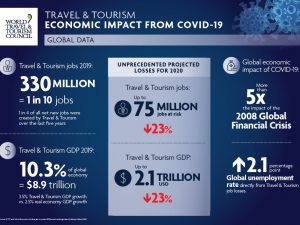World Travel & Tourism Council (WTTC), in its annual Economic Impact Report (EIR), shows how big a part travel and tourism played in driving the economy in the region last year, based on which the findings reveal how vital the sector will be for the region’s economic recovery from COVID-19. It shows the sector supporting one in 10 (330 million) jobs, making a 10.3% contribution to global GDP and generating one in four of all new jobs. Gloria Guevara, President & CEO, WTTC, says, “WTTC’s 2019 Economic Impact Report (EIR) shows how intrinsic Travel & Tourism was last year to the economy in Asia-Pacific, making it the fastest growing region in the world in terms of its contribution to GDP, supporting more than 182 million jobs or 9.6% of the total number of people employed.”
Read More »South Asia among top three fastest tourism growing regions
According to WTTC’s Economic Impact Report 2017, South Asia was the second fastest growing region in terms of travel in tourism in 2016, with a growth rate of 7.9 per cent. Southeast Asia (8.3%) was the region with the fastest growing travel and tourism sector in 2016, driven by the expanding Chinese outbound market and the countries own growing markets. Latin America (0.2%) was the slowest growing region. Globally, travel and tourism grew by 3.3 per cent in 2016, generating $7.6 trillion worldwide, which is 10.2 per cent of global GDP when the direct, indirect and induced impacts are taken into account. The sector supported a total of 292 million jobs in 2016, which is 1 in 10 of all jobs in the world. David Scowsill, President & CEO, WTTC, said, “This is the sixth year in a row that travel & tourism has outpaced the global economy, showing the sector’s resilience, and the eagerness of people to continue to travel and discover new places, despite economic and political challenges across the world.” The sector is expected to grow by 3.8 per cent in 2017, generating $ 7.9 trillion. This growth is slower than previously forecast, as a result of a downgrade to the global economy and a dampening of consumer spending.
Read More » Tourism Breaking News
Tourism Breaking News

